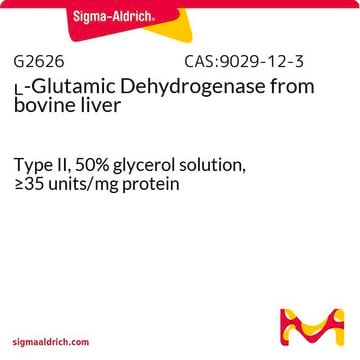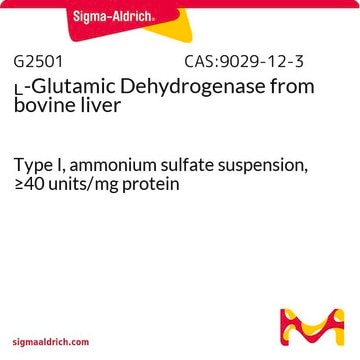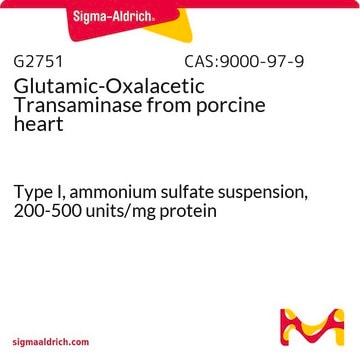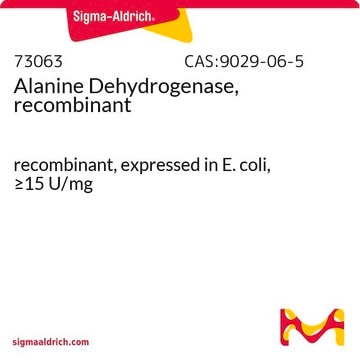Mammalian forms of this enzyme, including this bovine form, can use either NADP(H) or NAD(H) as coenzymes. L-glutamic dehydrogenase plays a unique role in mammalian metabolism. The reverse reaction catalyzed by this enzyme is the only pathway by which ammonia can become bound to the α-carbon atom of an α-carboxylic acid and thus, is the only source of
de novo amino acid synthesis in mammalian species.
The bovine enzyme is characterized by three sets of properties:
- It has a reversible concentration-dependent association, producing higher molecular weight forms.
- Forms tight enzyme-reduced coenzyme-substrate ternary complexes whose rates of dissociation modulate the steady-state reaction rates.
- Exhibits a wide variety of effects from the binding of any of a number of nucleotide modifiers.
L-glutamic dehydrogenase catalyzes the conversion of glutamate to α-ketoglutarate.















